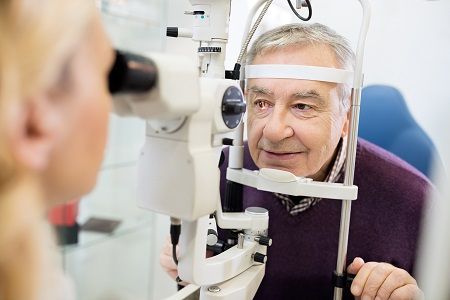Article
Ocular iStent Implant Improves Cataract Surgery for Glaucoma
Author(s):
Patients who received the implant in addition to the surgery showed more positive results than the control group in a randomized, single-masked study.

An ocular implant was found to increase the positive results of cataract surgery for patients with glaucoma.
In a new prospective, randomized, single-masked, concurrently controlled, multicenter clinical trial, 387 patients with mild to moderate primary open-angle glaucoma (POAG) received the iStent inject Trabecular Micro-Bypass System Model G2-M-IS from Glaukos Corporation following ocular surgery.
The device is only the second of its kind to be approved by the US Food and Drug Administration (FDA). The iStent inject creates a pathway through the trabecular meshwork into Schlemm’s canal, allowing aqueous outflow that reduces intraocular pressure (IOP).
The iStent inject Study Group—led by Thomas W. Samuelson, MD, of the Minnesota Eye Consultants—randomized patients 3:1 intraoperatively, allowing them to assess the stent in 269 patients.
Investigators did not respond to a request for comment at the time of publication.
All subjects were followed through 2 years post-op, during which they also received annual washout of ocular hypotensive medication. Adverse events did not occur during this time. For the first week, patients were prescribed topical antibiotics, and for the first 4 weeks, they were prescribed tapered topical prednisolone acetate 1%, to be reduced over time if patients were improving appropriately.
The implant was shown to address several symptoms that had prompted the surgical intervention—specifically, IOP ≥24 mmHg on 1-3 medications, unmedicated diurnal IOP (DIOP) 21-36 mmHg, and cataract requiring surgery.
Both the control group and the treated group were well-balanced prior to surgery, but the differences became stark after only the treated group received the implant. After 2 years, 75.8% of treated eyes experienced ≥20% reduction from baseline in unmedicated DIOP (P= .005). Only 61.9% of untreated eyes achieved these results.
Additionally, the average reduction in unmedicated DIOP from baseline was 7.0±4.0 mmHG for the treated group, but in the control group, the average was only 5.4±3.7 mmHg (P< .001). Of the responders, 84% of the treated group did not require ocular hypotensive medication at 23 months, as compared to 67% of the control group—63.2% of the treated group still didn’t require medication at 24 months, as compared to 50% of the control group.
Overall, the study showed that usage of the iStent inject implant alongside cataract surgery further reduces patients’ future dependence on additional medication.
The study, “Prospective, Randomized, Controlled Pivotal Trial of an Ab Interno Implanted Trabecular Micro-Bypass in Primary Open-Angle Glaucoma and Cataract: Two-Year Results,” was published online in Ophthalmology.



